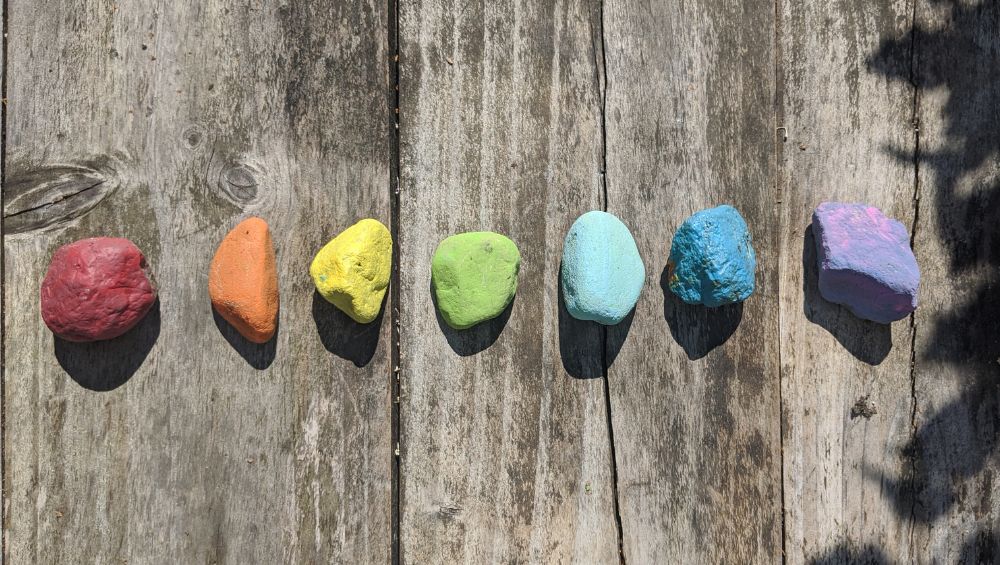
For Those New to Chakra Energy, Here Are The Basics of The Seven Chakras.
So, What Are the Seven Chakras?
Feeling a bit out of balance, I started a 7-day yoga chakra flow to help realign my inner energy in the hopes of coming back to a more stable and calm self. As I was following Allie’s seven chakra flows on her channel, which you can find here, there were things that I was starting to learn about each chakra. So, I decided to take some time and research what these chakras are and what they represent. Each chakra represents an element. Why? I had to find out. I’ve even included a little printout of the seven chakras to help guide you if you find yourself resonating with wanting to learn more.
What are chakras?
So, what are chakras? Well, chakras are energy points throughout your body. The main ones I will be covering sit on the spinal column. Each one is designed to link to internal organs, natural elements, and outward intentions or feelings, if that makes a bit of sense. This system belief started in India around 1500 B.C. There are seven main chakra points but up to 114 throughout the body, which is just wild to think about. It is believed that these chakra points are directly related to the health of our emotional state, mind, and physical body.
How many energy points are in the body?
Since it is believed that energy is always flowing through us and in everything around us, it is also believed that beyond the 114 points, there are also 72,000 nadis; channels, or streams that the prana (life force) flows through, so when these meet at certain points in the body a triangle is formed, this triangle is called a chakra, which means wheel. So, in essence, each chakra point is a wheel or vortex of energy. It is so incredible to think just how much complexity and energy there is in each one of us. Now, there is so much to learn about chakras, but we are going to focus on the main seven. As someone who is just starting to learn about spirituality and our internal energies, I wanted to learn as much about the basics as I could so I have a base for my continued learning.
The Seven Main Chakra Points
The seven main chakra points start at the base of your spine or root and then flow upwards to the top of the head or crown. It is believed that when all of these energy points are in alignment, you will have complete peace with the world around you and your soul. With all that said, let’s dive right in!
Muladhara or Root Chakra
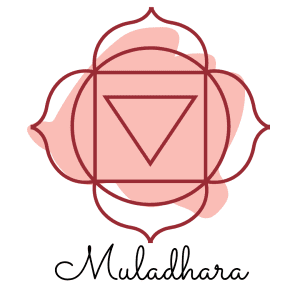
Starting at the base of your spine is your root or Muladhara chakra. This is the foundation for all other six chakras. Since this is the base for the rest of the chakra points along the spine, this is where your basic needs lie, survival, food, sleep, and shelter. You are creating a foundation for the basis of your life at this first energy point. It is believed that one cannot balance the others without the root chakra being in balance first. The color that represents this chakra point is a beautiful, intense Red. This is to symbolize strength, vitality, and our basic instincts. If you are looking for a related crystal, the crystal for the root chakra is Red Jasper. The element is Earth to represent the grounding needed, and the symbol is a lotus flower with four petals. The four petals represented in this symbol are said to connect to the four mind states that connect to this energy point; ego, intellect, mind, and consciousness.
Svadhishthana or Sacral Chakra
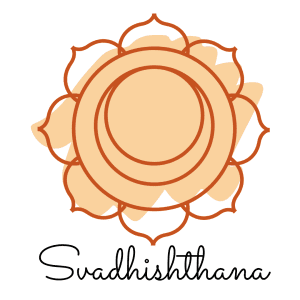
The second chakra is your sacral or Svadhishthana, and this is your pleasure-seeking energy force and your emotional being or body. The color of this chakra is energetic orange. The crystal linked to the sacral chakra is Carnelian. For this point, the element is water, so think fluidity and flexibility, the ability to work your way through any situation. This is where one would express their sexuality, emotions and the start of releasing your creativity. Opening your sacral chakra is believed to help you “feel” the world around you more. When this energy point is in balance, it will help you become flexible in situations throughout your life, creating a nurturing relationship with the world and those around you. The symbol for this chakra surrounds a crescent moon to represent the connection between water and the energy of the moon. Did you know that fluctuations in the water can be shifted based on the moon cycles, so cool!
Manipura or Solar Plexus Chakra
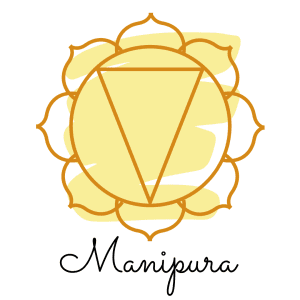
The third chakra is your solar plexus or Manipura; this is about taking action in all areas of your life. Creating your internal power and making decisions. This is where we find our independence, confidence, and personal power. The color of this chakra is bright Yellow, and one of the crystals that represent this point is Yellow Jade or Tiger’s Eye. The element for this point is fire, but some people also connect it to the air element since it also has connections to the sun, heat, and energy of light. The symbol for this chakra is a circle with a downward-pointed triangle which is to represent the fire element and the transformative power located in this energy center. The one way it was explained to me was imagen a fire and then think about all the energy that fire can create. That energy can then be used to move things (hopefully) forward if you bring this idea into the context of your life and desires. Create the momentum you need to reach your goals.
Anahata or Heart Chakra
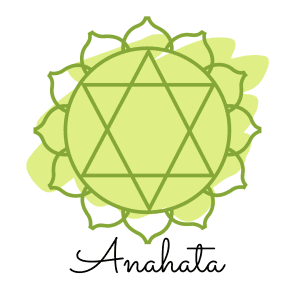
The fourth chakra is the heart or Anahata. This would be where some of our creativity is also sourced. This is where we show love and compassion not only to others but also ourselves and let our inner beauty shine bright. Glow girl! It is the transition point from the lower chakras to the higher ones. This is where our more enlightened energy starts to come into play, a place where your spiritual and earth-bound aspirations connect. This energy point also helps regulate your immune system and hormones, so if you’re feeling a bit off, try to rebalance this point and see what happens! The color of this chakra is rich Green, and the crystal that represents this chakra is Green Aventurine, the element for this energy point is air. The symbol for this chakra point is a twelve-petal flower with two intersecting triangles that form a six-pointed star that is meant to represent the element air, and the star that is formed when these two sides come together is to represent forces coming together to work in harmony. This helps drive home the concept that this energy point is the bridge or connection between the lower and upper chakra points.
Vishuddha or Throat Chakra
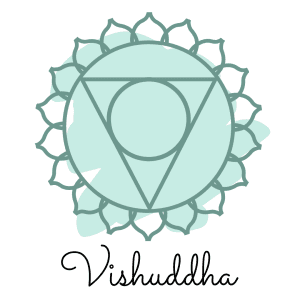
The fifth chakra is the throat or Vishuddha, and this is where we speak our truth and also learn to express ourselves. The element for this energy point is sound, which is important when communicating and expressing thoughts, ideas, and emotions. The energy between the lower half and the head must follow through this passage. Now, this chakra is naturally connected to the sacral chakra. At the sacral energy point is where we start to realize our creativity, and then our throat chakra is here to verbalize it or express it in ways we see fit. But beware, if this energy point is imbalanced, you can find yourself much more into gossiping or being verbally aggressive. The color of this point is Blue, and the crystal associated with this energy point is Lapis Lazuli.
Ajna or Third Eye Chakra
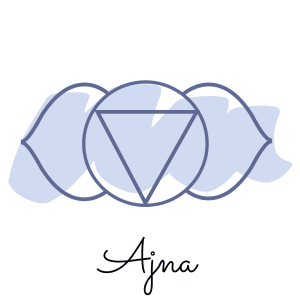
The sixth chakra is your third eye or Ajna; this is where we cultivate our intuition. Seeing the truth and having an open mind that can then lead us to find balance and peace not only with ourselves but those around us as well. The symbol for this energy point contains the elements that are frequently used or associated with wisdom, the upside-down triangle and the lotus flower. Concerning our physical body, Ajna helps regulate sleep and wake time; it can also be sensitive to light or visuals. At this energy point, we become ever more aware of even the lowest or most subtle energies around us. Those with psychic abilities would have a very strong energy force at this chakra point. The color for this point is Indigo, and the crystal to use for this chakra is Clear Crystal.
Sahasrar or Crown Chakra
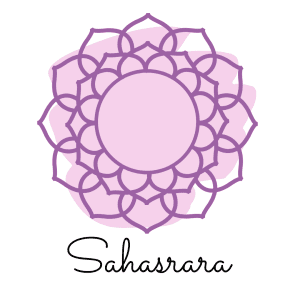
The seventh chakra is the crown or Sahasrar; this energy point will form or create access to a higher state of consciousness. Spiritual enlightenment, here we come! To some, the symbol for this chakra point is to represent the moon. The color of this chakra is intense violet or white, and the crystal that represents this energy point is Amethyst. Amethyst is one of my favorite stones, and I’ve always been drawn to it since I was little; it just looks so magical. The crown chakra and the root chakra are believed to be directly connected since each point represents the extreme opposites of the system. When in harmony with this energy point, you should experience exceptional bliss and clarity.
Transformation with the seven chakras
I hope, if anything, you take out of learning about these chakra points, especially in this time of transition and transformation we are all living in, is that you have the power to create the energy you want to feel and receive in your life. We all go through trials and tribulations in our life that will knock us down, but we have the power inside of us to pull ourselves up and rise to a new level of thinking and living.
Now, this is just some of the basic information on the seven main chakra points, but there is so much you can learn, and believe me, I’m learning more and more as I explore this holistic and spiritual way of being. I also have this blog post if you practice yoga or just beginning to explore; that will not only give you a great 7-day practice, but you will also learn more about our main chakra points and what they have to offer us.
I hope you all find the peace you are looking for and let your loving light shine bright.
Wishing you love, light and inner peace babes ✌🌈✨💜
- Spiritual Cleansing with Plants: A Complete Guide
- Calendula Magical Properties: Unlocking the Ancient Secrets of the Golden Healer
- Healing Herbs of Early Spring: 5 Wild Medicinals to Forage Now
- Embracing the Blood Moon Magic: A Beginner’s Guide to Lunar Eclipses
- Dancing with the Moon: Harnessing Lunar Energy for Your Wellness Journey
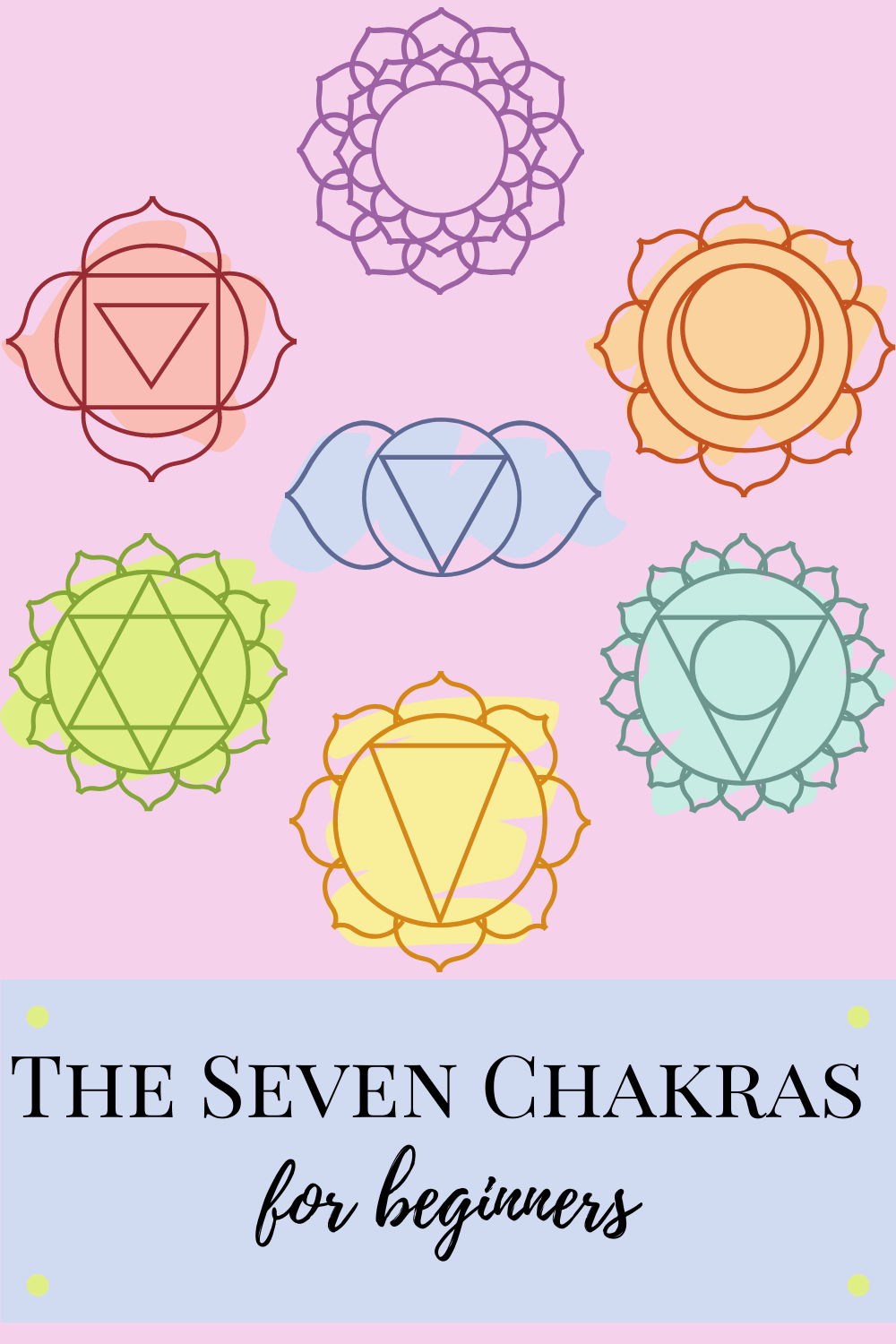


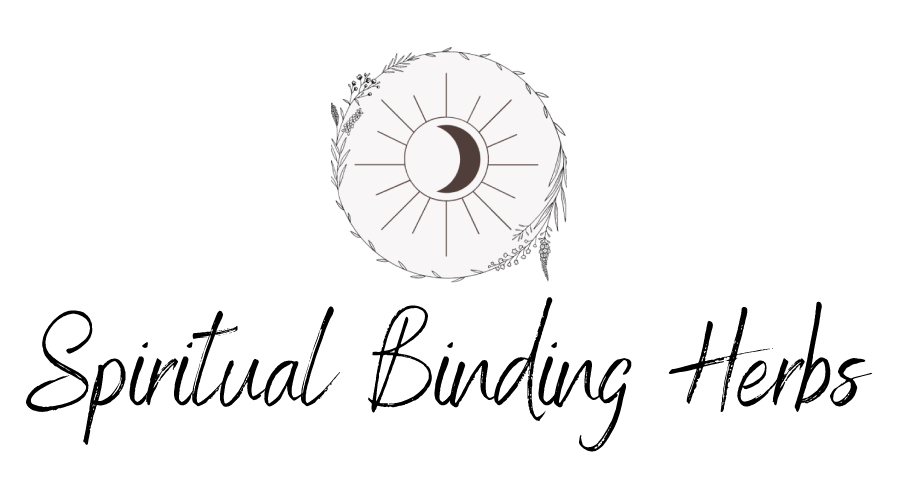
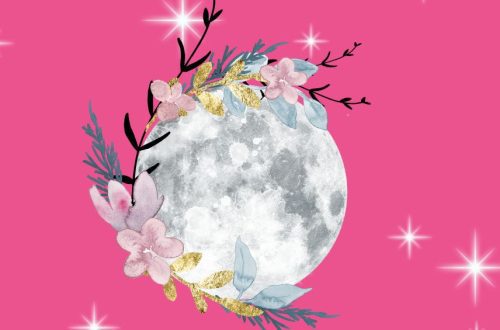

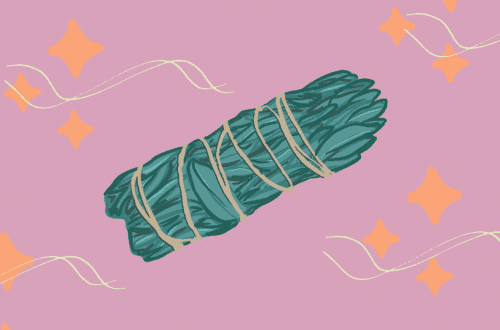
35 Comments
mobile legends hacker
Greate post. Keep writing such kind of information on your site.
Im really impressed by your site.
Hello there, You’ve performed an incredible job. I will
certainly digg it and for my part suggest to my
friends. I’m confident they’ll be benefited from this
website.
mobile legends hacks
Hmm it seems like your blog ate my first comment (it was extremely long) so I guess I’ll
just sum it up what I wrote and say, I’m thoroughly enjoying your blog.
I as well am an aspiring blog blogger but I’m still new
to the whole thing. Do you have any helpful hints for first-time
blog writers? I’d definitely appreciate it.
Elaina
Take it one day at a time, some days are better than others. I would find some blogging courses, they help a ton!
Jenna
This is such an excellent post. I am so thankful I read this. I knew a little about each chakra, where they were located and after reading this, I can say I now know a little bit more! I also love the download. Thank you so much!
Omera
Learned so much from this post. Can’t wait to read more on the chakras.
Anitra
I practice yoga regularly, and am a kids yogavyeacher. I’ve been so curious about chakras, and this post helps be get a better understanding of it all. Sharing with my daughter who is 19 as well!
Lisa
Very informative! Thank you for sharing! I think I will need to try the 7 day yoga chakra flow too! 🙂
Holly B
Great tips and information for the beginner! Everyone needs this info to understand the benefits of meditation and yoga to get a great experience!
Summer
I needed to read this! I have been really struggling with my root chakra lately, and it’s been hard to get past it. I will have to dig out my red jasper and do some outdoor meditation to try to kick it into gear!
silicone wristbands canada
Having read this I believed it was very enlightening.
I appreciate you taking the time and effort to put this informative article together.
I once again find myself spending a significant amount of time both reading
and leaving comments. But so what, it was still worth it!
Alexis Farmer
Thanks for the awesome breakdown of the chakras! I get a couple of them switched around and these distinctions make them easier to remember.
9eleven
Heya i am for the first time here. I came across this
board and I to find It really useful & it helped me out much.
I hope to offer something again and help others like you aided me.
Celia Frishman
Hey there! This is my first comment here so I just wanted to give a quick shout out and say I truly enjoy reading through your blog posts. Can you recommend any other blogs/websites/forums that cover the same subjects? Thank you so much!
Tricia Snow
Interesting info. I do not know much about the subject and you seem really knowledgeable.
Alice
Interesting
Whitney Woodley
Oh this is excellent!!! Learned so much from this post. I love dabbling in chakra healing.
Lisa, Casey, Barrett Dog
Lots of information and very informative. Thank you for sharing.
Tiffany
Love the breakdown of the Chakras! Simple and easy to understand 🙂
Megan
I just started learning about chakras last year and find it so fascinating and interesting. I love learning our mind/body/earth connections!
Sabrina
Sorry for my ignorance but I had no idea about yoga. I thought it was just an exercise system. Boy, did you open my ideas. Thanks for sharing.
Cecile
Very informative. I have heard of it but never had the chance to read on them. I love the way you write too.
Debbie
Keep hearing a lot about chakra lately. Haven’t put it all together yet! Haha
Barbara
Great information! Very detailed!
Danielle Ardizzone
This is a great guide, especially for a beginner like me!
Amber
Thank you for this information. I recently started yoga and I’ve noticed a difference in my health physically and emotionally.
Sydney Delong-Eat Simply Sweet
Very interesting! I knew nothing about chakras, so this is a great start at beginning to learn!
Sabrina DeWalt
This is something I am interested in learning more about.
Kristin
This is very informative for beginners like myself! Fascinating and healing stuff!
Misskorang
I had no idea…Now I do.
Thanks for such great info and for breaking t down for a beginner like me
Kendra
Thanks so much for educating me on the chakras! This is fascinating!
Daralee
Hello I was wondering if you have a printable version of this? I would love to have it on hand and not have to stare at my phone. I am interested in the colored version if possible. Thank You
Melissa Jones
Great info!
Marianne
Very in depth and informative. I don’t know much about Chakras, so this post was helpful!
Cindy Moore
Excellent info! I’ve done chakra and energy work for years and find it so helpful!
Maya
Great post. A big believer in the power of Chakra mediation here!